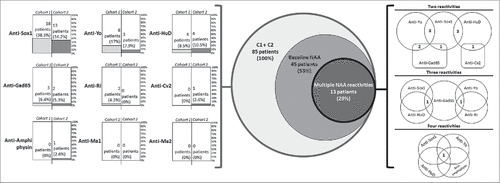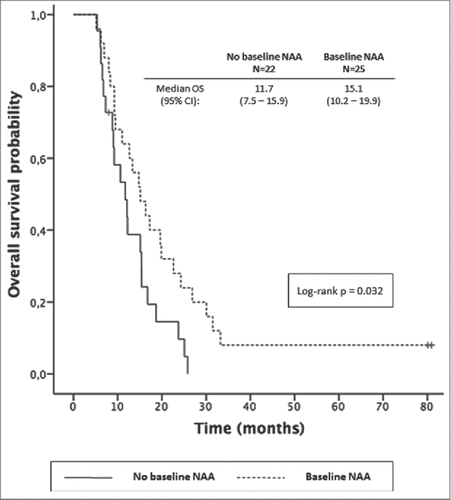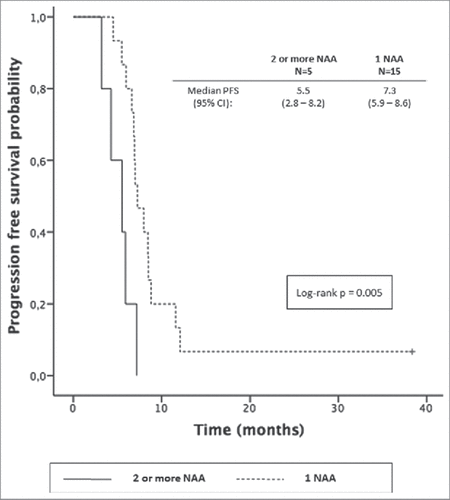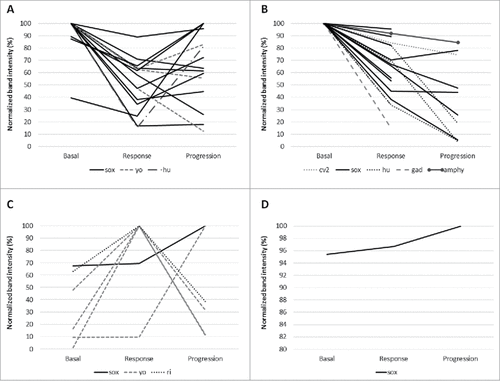Figures & data
Table 1. Patients' characteristics.
Table 2. Univariate analysis for overall survival including both cohorts (Log-Rank test).
Table 3. Neuronal autoantibody detection at baseline.
Figure 1. Neuronal autoantibodies prevalence in patients with SCLC. On the left, percentage and absolute numbers of neuronal autoantibody detected at baseline in each cohort. In the center, Benn's diagrams illustrating the different NAA multi reactivities in patients from both cohorts. On the right we show the combination of NAA with 2, 3 or 4 reactivities. Numbers at the intersection of Benn's diagrams are number of patients with that combination.

Table 4. Objective response rate, progression free survival and overall survival in patients with at least 1 baseline positive NAA vs those with no detectable NAAs.
Figure 2. Overall survival in patients treated with chemotherapy alone (n = 47) with or without any baseline NAA.

Figure 3. Progression free survival in patients treated with ipilimumab plus chemotherapy with presence of 1 NAA vs 2 or more (n = 20).

Figure 4. Changes in autoantibody titers at different time-points in both cohorts. A: Patients treated with chemotherapy, whose NAA titers decreased after treatment was started. B: Patients treated with chemotherapy and ipilimumab, whose NAA titers decreased after treatment was started. C: Patients treated with chemotherapy, whose NAA titers increased after treatment was started. D: Patients treated with chemotherapy and ipilimumab, whose NAA titers increased after treatment was started.

